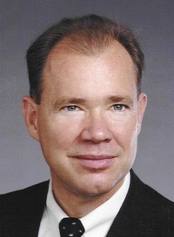Promoters of the California bullet train are behaving like a salesman who gets his foot in the door and won’t take “no” for an answer.
It was 2008 when voters approved $10 billion in bonds to kick start a high speed rail (HSR) building program. But they were promised a system whose total cost would be $45 billion, that additional money would be secured from sources including private investment and that the system would meet environmental concerns.
 An expert study sponsored by the Reason Foundation and the Howard Jarvis Taxpayers Foundation showed the actual cost for this extravagant plan would approach $100 billion or more. “There are no genuine financial projections that indicate there will be sufficient funds,” the authors wrote.
An expert study sponsored by the Reason Foundation and the Howard Jarvis Taxpayers Foundation showed the actual cost for this extravagant plan would approach $100 billion or more. “There are no genuine financial projections that indicate there will be sufficient funds,” the authors wrote.
However, the campaign for passage sponsored by special interest backers — including unions and contractors – focused on the promise that passengers could be whisked from Los Angeles to San Francisco in a little over two hours making the project look like a Ferrari at the cost of a used Ford Pinto.
Once the voters had given their approval and the actual costs of about $95 billion were revealed, with no private investment in sight, the voters started to catch on that they had been bilked. But Gov. Brown, who has taken ownership of the bullet train project with almost a boyish glee, responded to the public’s anger by pushing the High Speed Rail Authority to adjust the plan downward to one costing a more modest $65 billion. This reduction would be accomplished by using a “blended” approach, meaning that only part of the system would be high speed, while the rest would rely on conventional “low speed” rail facilities. As now envisioned, the plan is starting to look like a used Pinto at the cost of a Ferrari.
Needless to say, the failure to meet so many of the commitments contained within the ballot measure has generated numerous lawsuits. After Sacramento Superior Court Judge Michael Kenny deliberated on the merits of one such suit, he determined that the High Speed Rail authority “abused its discretion by approving a funding plan that did not comply with the requirements of the law.” Gov. Brown remained defiant. “It’s not a setback,” he told reporters, adding, that the ruling “didn’t stop our spending, so we’re continuing. As we speak we’re spending money, we’re moving ahead.”
Perhaps the governor’s attitude should come as no surprise, considering his previous statements. Last year, while he was campaigning for his Proposition 30 tax increase, he responded to a reporter’s inquiry about the money being spent on the train by stressing the importance of making sacrifices for the future. As an example he pointed to the investment in medieval cathedrals that were financed through the sacrifices of generations. Brown failed to mention that, since many of these buildings took nearly 200 years to complete, most of those who contributed never lived to see the final result. At the rate that the HSR is progressing, Californians can sympathize.
If Jerry Brown really wants to leave a historic legacy, one that will be appreciated by all Californians, he should support the proposal being advocated by a number of lawmakers: Put the HSR back on the ballot with honest costs and performance estimates. If voters approve, the governor will be vindicated. If voters reject the plan, he will still be widely admired for his integrity and for trusting the voters to make a wise decision after being given the facts.

